Location Gallery
Luguburu Ghantabari


Luguburu Ghantabari situated near TTPS Lalpania a small village of “Santhalis” a group of Tribal , about 16 kilometer far from Gomia Block is the pride of Santhal community since the period of civilization called Sosnok Jug in Hor-dishom. Luguburu Ghantabari Dharamgarh was re-established in the year 2000.
Then the every year religious gathering is held at Darbar Chatani under foot hill of Luguburu in the lap of famous Lugu hill series (The second highest hill series of jharkhand) and surrounded with Jharkhand’s famous river Damodar and small hilly rivers Katail and Sadabahar , situated in the north side of Tenughat Dam.
Kaitha Shiv Mandir


Kaitha is a Village in Ramgarh Block in Ramgarh District of Jharkhand State, India. It is located 6 KM towards East from District head quarters Ramgarh Cantonment. 6 KM from Ramgarh. 47 KM from State capital Ranchi
Ramgarh ( 4 KM ) , Dvc Colony ( 5 KM ) , Ratwe ( 6 KM ) , Jamira ( 7 KM ) , Barlong ( 7 KM ) are the nearby Villages to Kaitha. Kaitha is surrounded by East Singhbum Block towards East , Mandu Block towards North , Ormanjhi Block towards South , Gola Block towards East .
Ramngarh , Saunda , Patratu , Tenu Dam-cum- Kathhara are the near by Cities to Kaitha.
This Place is in the border of the Ramgarh District and Ranchi District. Ranchi District Ormanjhi is South towards this place .
Kaitha Local Language is Hindi. Kaitha Village Total population is 4359 and number of houses are 789. Female Population is 48.1%. Village literacy rate is 55.2% and the Female Literacy rate is 22.1%
Bandhan Mandir


During the holy month of Shravan, hundreds of red threads are tied to connect the domes of the Baidyanath Dham Temple and the Maa Parvati temple. This ceremony is known as the Gath Bandhan and can be performed by devotees. Devotees offer the threads which are tied by a person who climbs to the top of the Baidyanath temple dome (Panchsul).
Pandas chant slokas and then Bhandaris (members of a local tribal community) climb the domes of the temples and tie the sacred threads. This is a powerful ritual which has great benefits for the lives of devotees.
Gayatri Mandir


Gayatri Mandir is a popular religious landmark, located in Sector-9/A. several visitors come to the temple to attend the special Navmi Puja performed here. On this occasion, prasad of khichdi is distributed among devotees.
Sai Temple


It takes 8 minutes to travel from Ranchi to Sai Baba Temple Ranchi. Approximate driving distance between Ranchi and Sai Baba Temple Ranchi is 7 kms or 4.3 miles or 3.8 nautical miles
Jagananath Temple
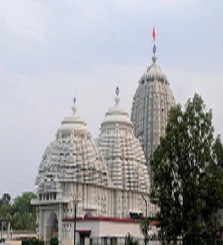

Jagannath Temple in the Bokaro Steel City is a popular tourist attraction, which looks exactly like the Jagannath Temple in Puri, Orrisa. The temple has been recently constructed by the Bokaro Steel Plant Management and has become a prominent place, where devotees come to pray to Lord Jagannath.
Jama Masjid


The Jama Masid is a mosque located in Ramgarh Cantonment town in Ramgarh district in the Indian state of Jharkhand. The mosque hold prayer sessions every day.
Maya tungri pahari mandir
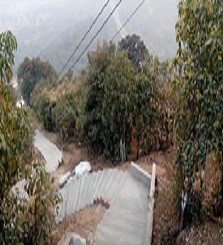

Chetar is a small Village/hamlet in Ramgarh Block in Ramgarh District of Jharkhand State, India. It comes under Chetar Panchayath. It is located 7 KM towards East from District head quarters Ramgarh Cantonment. 2 KM from Ramgarh. 43 KM from State capital Ranchi
Jayda Temple


An Ancient Temple of Lord Shiva, one of the pilgrimage of Jharkhand. Situated on the way to Ranchi-Tata and Shore of Swarnarekha river. A Fair held every year on the eve of Makar Sankranti(Tusu Festival).
Chaitanya mahaprabhu lotus feet
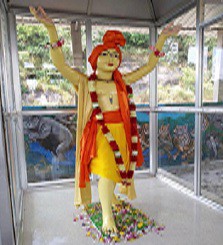

Chaitanya mahaprabhu lotus feet
Tuti jharna mandir
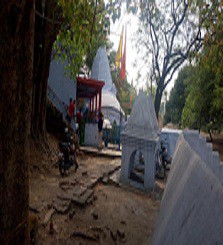

Tuti jharna mandir
Shri kathotia Temple
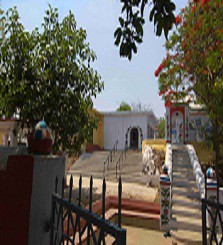

Shri kathotia Temple
Baba Daninath Temple


Baba Daninath Temple
Bhairosthan Temple


Bhairosthan Temple
Kanhaiyasthan
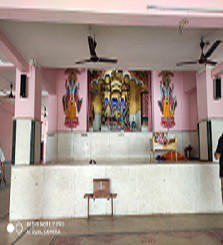

Kanhaiyasthan
Jharna Baba Temple
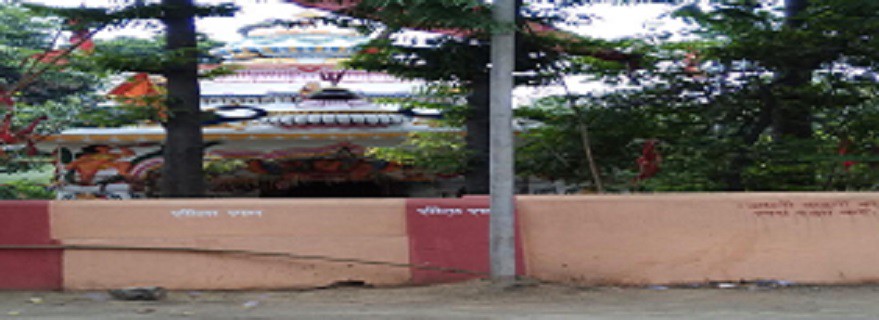

Jharna is a small Village/hamlet in Chandankiyari Block in Bokaro District of Jharkhand State, India. It comes under Jharna Panchayath. It is located 27 KM towards East from District head quarters Bokaro Steel City. 8 KM from Chandankiyari. 135 KM from State capital Ranchi
Bhootnath Temple


Bhootnath Temple Bokaro, at NH 23
Shiv Ganga Basukinath
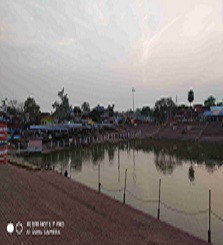

Shiv Ganga Basukinath
Satsang Thakurbari


Satsang Thakurbari
Dumka Sai Mandir


Dumka Sai Mandir
Leelanand Aashram


Leelanand Aashram
Maa Akarshani Pahari Devi Temple


Maa Akarshani Pahari Devi Temple
Ram Krishna Mission Vidyapith


Ram Krishna Mission Vidyapith
PaglaBaba Ashram


PaglaBaba Ashram
Baidyanath Dham


Jharkhand is the nest of few pilgrimage centres, which have great historical importance. Deoghar is one such place of reverence.
Deoghar (the house of Gods) is a centre of peace and harmony that features many socio-cultural and industrial units. It is a popular health resort and an important Hindu pilgrimage.
The ancient temple of Baba Baidyanath (kamana-linga) where one of the twelve jyotirlingas of India is enshrined. Deoghar is believed to be the place where Ravana carrying Lord Shiva on his way to Sri Lanka had stopped, betraying the conditions of a non-stop journey. This failed him in his mission of taking the Lord to Lanka and the Lord remained rooted here.
The place become known as BaidyanathDham after Lord Shiva, also known as Baba Baidyanath. Every monsoon (in the month of Shravan) countless devotees undertake a rigorous 100 kms piligrimage on foot from Ajgaibinath (Sultanganj) to offer holy water to Baba Baidyanath. The pilgrimage is deemed complete with homage paid at Basukinath, almost 43 kms from Deoghar.
Within the precincts of the main temple, there are 12 other temples, dedicated to different Gods, including Lord Mahadeva.
Maa Chhinmastika Devi Mandir


About 65 kms from Ranchi, in Ramgarh district, Rajrappa is a famous temple complex. The presiding deity of the main temple, at the confluence of rivers Damodar and Bhera, is Maa Chhinnmastika.
Inside the old temple, the headless statue of the goddess stands over the bodies of Kamdev and Rati on a lotus bed. A large number of devotees throng the place everyday.
Maa Chhinmastika Devi Mandir
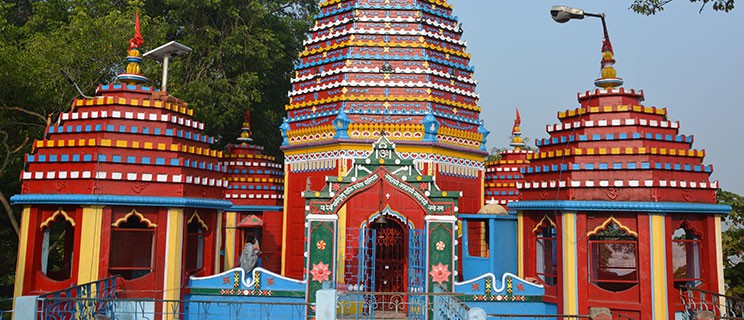

About 65 kms from Ranchi, in Ramgarh district, Rajrappa is a famous temple complex. The presiding deity of the main temple, at the confluence of rivers Damodar and Bhera, is Maa Chhinnmastika.
Inside the old temple, the headless statue of the goddess stands over the bodies of Kamdev and Rati on a lotus bed. A large number of devotees throng the place everyday.
Harihar Dham


While in Giridih, do not miss the opportunity to pay obeisance to the largest Shivling of the country. Known as Harihar Dham, it falls on Hazaribagh-Bagodar road of NH 100 from Ranchi. Your eyes can not afford to miss the massive temple, even from a distance, built in the shape of a Shivling that stands 65 feet tall.
The temple was constructed in 1987 by Pandit Amarnath Mukhopadhyay, Late Chief Justice, and Kolkata High Court. Later a temple of Radha-Krishna has also come up within the temple premises. The temple also has a large marriage hall. The month of Sawan witness a heavy rush of devotees, who offer Jal (Holly Water) to the Shivling, taking water from the nearby Jamunia River. The nearest station from the site is Hazaribagh Road about 13kms away. Falling on the Main Road, it can be easily reached by buses, plying from Hazaribagh to Vishnugarh or those to Giridih or Deoghar. Further, there are long distance buses as well from Hazaribagh to Kolkata which pass by the route of the temple.
Shakti Mandir


The temple of goddess Shakti or Durga is located in the heart of the city, at Joraphatak, 2 kms from the railway station. The temple, which is less than a decade old is an impressive structure made of shite marble. The main sanctum bearing the icon of the Goddess is on the first floor. It also has an image of Lord Shiva, which is rare in Jharkhand, considering the preponderance of Ling worship here. Lord Hanuman is also present under the same roof. The perambulatory or pradakshina path is flanked by a Shiv ling and figures of Radha-Krishna. The temple commands unflinching faith from the devotees far and wide. So much so, that they undertake penance by walking barefoot all the way to the temple, to offer pujas, particularly on Tuesdays and Saturdays.
Surya Mandir


Surya Temple, Giridih is beautiful temple built in middle of lake dedicated to Lord Surya. This temple is in the shape of lotus flower. Inside the temple the statue of Lord Surya is seating on a chariot driven by seven horses. Other statue that are worshipped in the temple include Lakshmi Narayan, Rama, Sita, Hanuman, Shiva, Parvati, Vedmata Gayatri, Radha and Krishna. Earlier this place was known as Sita Ni Chauri and Ramkund Locally.
Maa Ugratara Temple


Maa Ugratara Temple situated in Latehar district of Jharkhand State. It is located about 90 km from state capital Ranchi. The distance of the city from Latehar is 37 km. It is believed that all the wishes sought here are fulfilled. This temple has been built in the tenth century by the royal house of Tory. The first temple was owned by the royal family. In the present, the royal and mixed families jointly manage the temple. The devotees come here from worshiping to sacrifice and marriage programs. Especially in Ramnavmi and Durga Puja, a large number of pilgrims come for worship.
Pahari Mandir (Ranchi Hill)
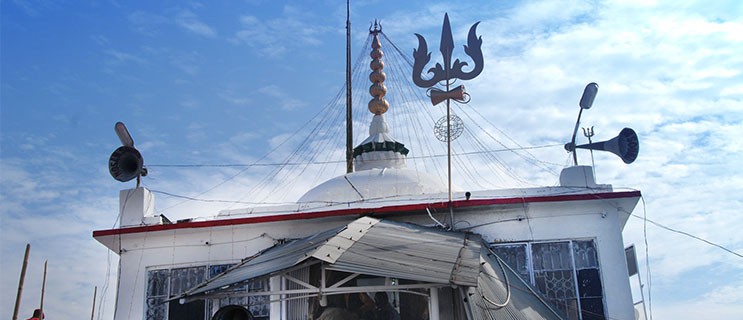

The age old Pahari Mandir that turns half kilometre within from the Ratu Road is a fast developing destination for religious tourism. Located at about 8 kms from the railway station and distance of 12 kms from the airport, the 2140 feet Ranchi hill, houses the temple at its summit. A flight of 468 steps lead you to the “Pahari Baba” that is worshiped in the form of a Shiva Linga. There is major surge of devotees during the month of Saavan (July-August).
The hill offers a kaleidoscopic view of the capital city. It is also called “PhansiTongri”, by the local villagers. A number of revolutionaries are believed to have been hanged here by the erstwhile British rulers in the dense cover of forests that once existed there.
Deori Mandir
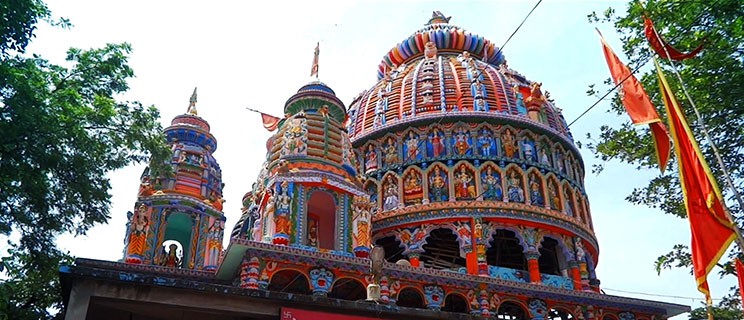

A temple of SolhaBhuji(16 arms) Goddess Durga, it is located on the right side of Tata-Ranchi Highway (NH-33), at 60 kms from the capital city Ranchi and 3 kms from Tamar. It is the only temple in the Jharkhand where the Pujas are done by the Pahans (Tribal Priests) along with the conventional Brahmins. The original temple is in stone dating back to about 10- 11th century AD. The temple commands unflinching faith from its devotees, from far and wide. The icon of the temple with 16 arms is unique considering that the commonly worshiped form of Goddess Durga is with eight arms.
Jagannath Mandir, Dhurwa, Ranchi
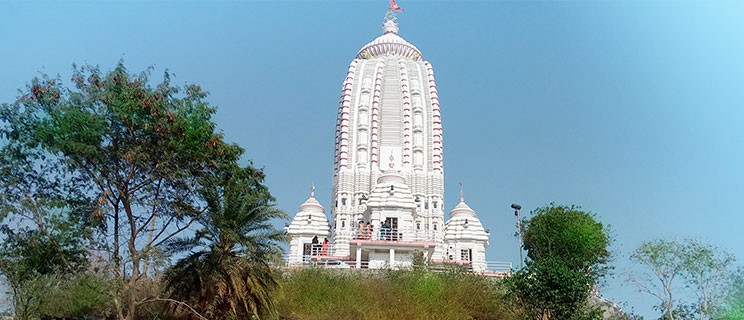

The seventeenth century temple dedicated to Lord Jagannath nestles on a small hillock at Jagannathpur. Located near HEC, Dhurwa, on the South-West of the capital city, it is 11 kms from the railway station and 6 kms from the airport. The 100 feet tall temple was built by Thakur Aninath Shahdeo, in 1691 AD. The temple’s architectural style is reminiscent of its counterpart at Puri. It draws lakhs of devotees every year, especially on the occasion of car festival or Rath Yatra, in the month of June/July.
The temple also has a large hall in its complex, where thousands of marriages are solemnized every year.
It can be reached through various means of locally available transport and light vehicles.
Parasnath
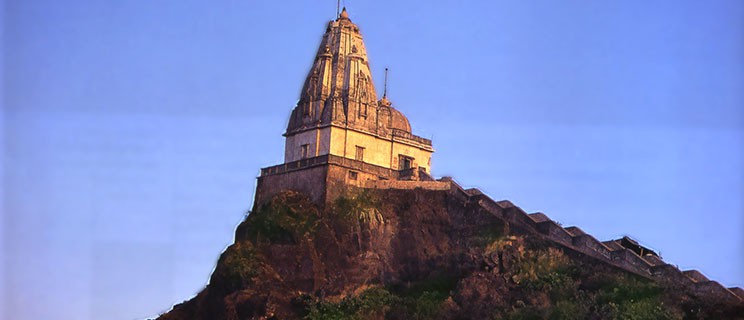

Parasnath, the temple town is the highest hill in the Jharkhand, at an elevation of 4480 ft and 35 km from Giridih town. The Parasnath temple is considered to be the most important and sanctified holy places of Jains. The temple complex is not prejudiced, for it welcomes all the sects of the Jains. It is 9 kms uphill from the base which makes it an 18 kms round trip, with two temple and 24 shrines.
Most of the temples are dedicated to Parsvanath who meditated and attained salvation on Parasnath Hill that looms over Shikharji town. The oldest of the temples in Shikharji is the 300 Years old Bageecha Temple (Garden Temple). The delicately carved stone sculpture of Parasnath points out that the deity was restored to the temple after being sealed in a wall of the nearby Tera Panthi Shrine for many decades. Most of the shrines in Shikharji are spic and span with hordes of pilgrims from all across the globes.
Twenty Jain Tirthankars, out of twenty-four attained salvation in the parasnath hills. These 20 Tirthankars are:
Ajitnath, Sambhavnath, Abhinandan, Sumatinath, Padmprabhu, Suparshwanath, Chandraprabhu, Suvidhinath, Sheetalnath, Shreyansnath, Vimalnath, Anantnath, Dharmnath, Shantinath, Kunthunath, Arnath, Mallinath, Munisuvrat Swami, Naminath, Parsvanath.
Jains believe that ordinarily, all 24 tirthankars attained nirvana at this location.
Basukinath Dham
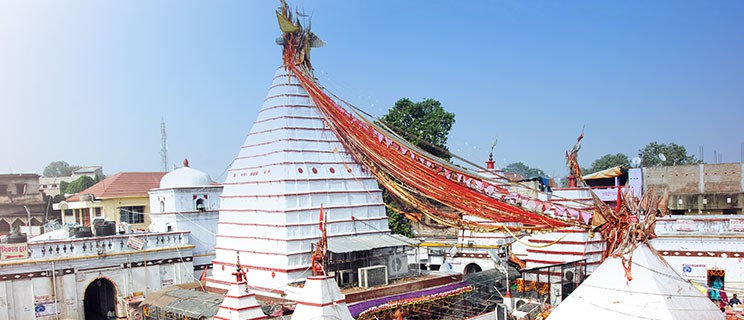

After paying obeisance at BaidyanathDham, pilgrims and kanwarias undertake an arduous trek to basukinathDham in Dumka district, around 50 kms away, to offer prayers at the shiva temple here. The pilgrimage to BaidyanathDham is considered complete only after offering prayers at BasukinathDham, that is dedicated to Shiva.
BasukinathDham houses over 30 shrines within the complex, and is also known by the moniker faujdaridham, or a criminal court where those seeking justice will not be disappointed. The present structure is estimated to be around 150 years old and is said to have been built by BasakiTatme, a tribal.
Anjan Gram


Anjan Gram is village situated from 18 KM away from Gumla via Toto and 130 KM away from Ranchi. This place is bounded by the Netarhat Hills and Khatwa River. This place is supposed to be birth place of lord Hanuman. . Goddess Anjani was the mother of Lord Hanuman on whose name the place has been named.
Tapovan Hill
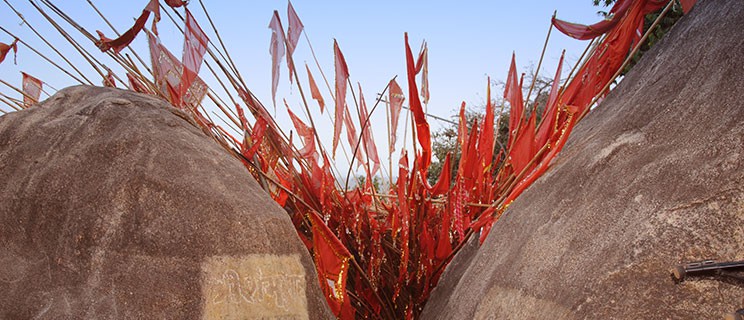

Located 10 kms south of Deoghar is considered to be the site of meditation for many sages. Tapowan is believed to be the ‘tap’ bhoomi (meditation site) of Sita.
Bhadrakali Mandir
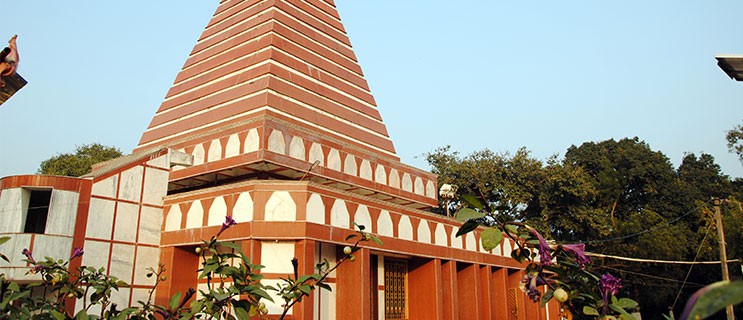

The temple is located 1.5 kms away from Itkhori Block in Bhaduli Village. It is situated at Chatra-Chouparan path. MaaBhadrakali Temple is very famous religious place, it comes among one of the shakti peeths.
This place is surrounded by three sides from Buxa River which looks like U-shaped. The premises of Maa Bhadrakali Temple is surrounded with green forests and falls. It has great importance in History of India because of the black colour statues(specially constructed in Shak, Gupta and Vardhan period - 1500 to 1800 years ago)those were found in excavation. Today it is one of the great holly place as well as tourist place of Hindus and others. In Buddha period, Buddha came here and stayed for some time. In the meantime his relatives came here searching him and found him but Buddha ignored them to identify as a relative. His relative told "Itkhoi - Yahikhodiya", since then its name became ITKHORI.
Rankini Mandir
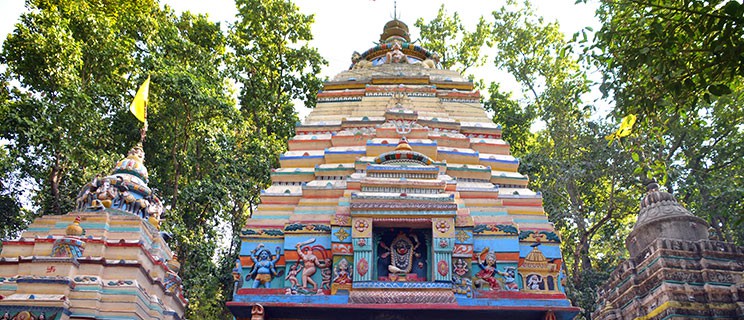

Located on the Hata-Jadugoda state highway, the temple is in the Rohinibera village of Bansila Gram Pnchayat in Potka block. It is about 3 kms from Jadugoda and 35 kms away from Tatanagar Railway Station. The icon worshipped in the temple is an incarnate of Goddess Kali. The ancient temple is said to have formerly existed on a rock.
As the heresay goes, the temple had even witnessed the human sacrifices in the past, till about 1865, which was eventually stopped by the British. The belief amongst the tribes ran that the Goddess herself killed the victims. The priests during those days were from the tribal Bhumij community. From Tatanagar, come to Jadugoda, from where take a local transport to the temple.
Sun Temple
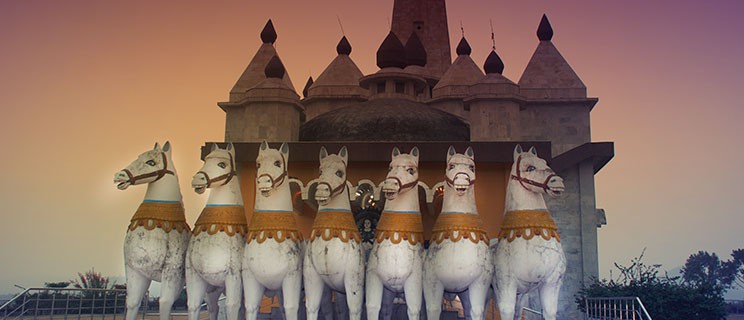

The elegant temple of the Sun God, is 40 kms away from the railway station on the Tata Road near Bundu. It is fashioned in the form of huge chariot with 18 bedecked wheels and seven true to life horses as if ready to gallop ahead, it has been built by the Sanskriti Vihar and the temple committee is headed by Shri Ram Maroo, father of the former Rajya Sabha MP Shri Ajay Maro.
The temple has large pond within its compels that comes to life during Chhat or the festival of sun God. The colourful Tusu festival is also celebrated there by the natives on June 25. A dharmashala has been built for the pilgrims. The all-weather motorable road running up to the temple premises is an added advantage for the tourists and devotees alike.
MALUTI (Temple Town)
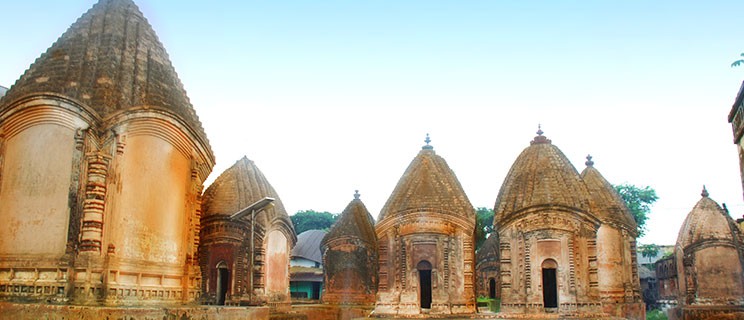

Maluti is a unique heritage village in Dumka district, 55 kms from Dumka town, that boasts of exquisite terracotta temples, the village was once known as ‘Gupta Kashi’ or hidden Varanasi. In fact, it originally had an auspicious number of 108 temples, of which only 72 survives today.
The village is situated on the banks of river Chila, at the far end of the Chhotanagpur plateau, surrounded by lush forests, hillocks and rivulets. The name ‘Maluti’ is derived from the Malla kings of Bishnupur in Nankura district of West Bengal, who ruled over this area in the 17th and 18th centuries. In fact, it was the master artisans of Bishnupur who created the exquisite terracotta temples here.
The village gained some prominence in the 15the century as the capital of non-kar raj (tax-free kingdom). The story goes that a fiefdom was awarded to Basanta Roy from katigram village by Sultan Alauddin Husain Shah of Gaur (1495-1525). The son a poor Brahmin, Basanta had managed to catch and return the sultan’s pet hawk and the fiefdom was the grateful sultan’s reward.
Exquisite carvings on the outer walls of a temple depict scenes from the Hindu epic Ramayana How Maluti became a temple village is also an interesting story. It is said that the Basanta kings were highly pious and instead of bulding palces they built temples. After the royal family split into four branches, each branch of the family began building temples in competition with each other, creating what turned out to be this unique little temple village.
Inscriptions in the early Bengali script found on the temples reveal that they were named after female deities. The most ancient temple in Maluti- over a thousand years old – is that of goddess Maulikshya, also the presiding deity of Bajasanta’s dynasty.
Maluti’s temples have survived four centuries of nature’s vagaries. In 2009, an NGO called Save Heritage and Environment (SHE) along with the Global Heritage Fund (GHF) became actively involved in conservation efforts here. The GHF has declared Maluti as one of the world’s twelve vanishing cultural heritage sites, and the only one from India.
Mauliskhya comes from the words, mauli (head) and iksha (vision). Today, only the goddess’ beautifully carves stone head, with a benign smile remains. Made of laterite stone, originally the sculpture was beautifully chiseled into the shape of the goddess. The goddess Maulikshya is worshipped here as singha Vahini Durga or the goddess riding the lion. However, as the deity bears no resemblance to Durga’s description in various Hindu text, and the name Maulikshya too is not common among either Hindu or Buddhists deities, she remains something of a mystery.
According to another legend, Maulikshya is said to be the elder sister of goddess Tara of Tarapith (in West Bengal). The renowned yogi (ascetic) Bamakhyapa (or Bamdev) is believed to have attained enlightenment first by the grace of Maulikshya and then from Tara.
Around Maluti
Hot water springs: There are several hot water springs in Dumka district, most of which are located in peaceful environs and are said to have medicinal properties.
Set amidst the picturesque Ramgarh Hills near the Bhurbhuri river, the hot water spring of Tatloi is 15 kms from dumka, near Barapalasi. Its waters contain helium, which is believed to hold a cure for a many of diseases, Dapat Pani hot water spring is a little futher 10 kms from Dumka on the left bank of the Mor river, near Dhadakiya.
Another hot water spring, ThariaPani is about 40 kms from Dumka on the Dumka-Pakur road, near Gopikandar. Nunbil hot spring is about 60 kms south of Dumka. “SusumPani” hot water spring is near Baghmara village, on the banks of the Mayurakshi river
Massanjore Dam:
Situated 35 kms from Dumka town, Massanore Dam is a much loved tourist destination and a popular spot with the locals. Constructed over the temperamental Mayurakshi river, the dam was built in the 1950s to boost irrigation, generate electricity and control flooding. The dam is 50 m high has 21 lockgates. Since the project was supported and aided by the Canadian Government. It is also known by the sobriquet of ‘Canada Dam’. The HizlaMela, formally called Hizla Janajati Mela, is a week-long fair held in February every year. Special performances of dance and music by folk artists from across the state draw large crowds. Besides this, all kinds of local produce and handicrafts, are bought and sold in the Hizla Mela grounds.
The fair began more than a century ago on the banks of the Mayurakshi river, just 4 kms from Dumka town. The brainchild of a British administrator called John R Carstairs, ‘Hizla’ derives, in fact, from ‘his law’. Due to the success of Hizla Mela, the fair has been held annually ever since with great enthusiasm.
Naulakha Mandir
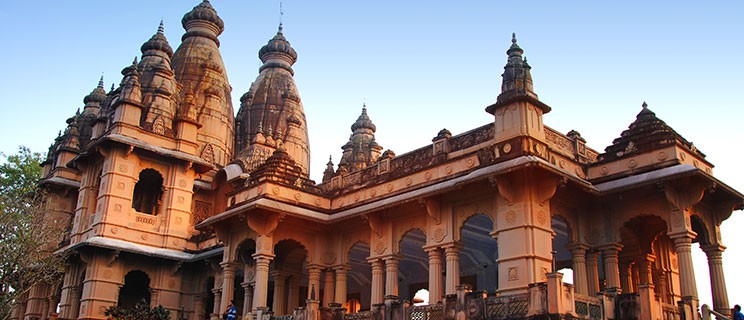

Situated 1.5 kms from Baidyanath Dham is the Naulakha Temple, so called because Rani Charushila of Pathurighat royal family spent 9 lakh rupees on building it. The main deities in the temple are Radha and Krishna. The temple’s architecture closely resembles that of Belur Math (Ramakrishna Mission’s Headquarters) in West Bengal and its view is architecturally splendor for tourists.
Yogoda Satasang Asram


Office & Paramahansa Yogananda's Room
Weekdays
9:00 a.m.
4:30 p.m.
Sunday
11:30 a.m.
12:30 p.m.
Grounds
Open all day from
6:00 a.m.
7:00 p.m.
Dhyana Mandir
Meditation hall is open all day for private meditation.
Schedule of services:
7:00 a.m. – 8:00 a.m. (Everyday except Sunday)
10:00 a.m. – 11:30 a.m. (Sunday Satsanga)
10:00 a.m. – 11:30 a.m. (Sunday Satsanga for Children)
5:30 p.m. – 7:00 p.m. (Everyday except Thursday and Sunday)
5:30 p.m. – 9:00 p.m. (Thursday)
4:00 p.m. – 7:30 p.m. (Sunday)


